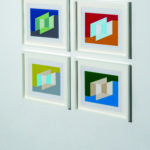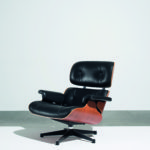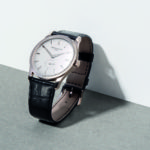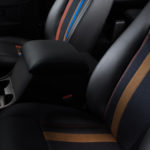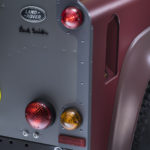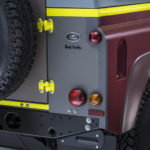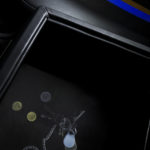Archives for :
People
Ed Welburn, vice president of General Motors Global Design will retire on July 1, following a 44-year career with the company.
- Ed Welburn, vice president of General Motors Global Design will retire on July 1, following a 44-year career with the company.
- Michael Simcoe, a 33-year veteran of GM Design and vice president of GM International Design, will succeed Welburn
Michael Simcoe, a 33-year veteran of GM Design and vice president of GM International Design, based in Australia and Korea, has been selected to succeed Welburn. He will be the company’s seventh design leader and begins transitioning into his new role on May 1. His replacement has not been named.
Welburn, 65, has been celebrated inside and outside the industry for his extraordinary achievements. He has led GM Design since 2003, and globally since 2005, the first African American from any automaker to do so.
“GM Design is among the most respected and sought-after organizations in the industry because of Ed’s leadership. He nurtured a creative, inclusive and customer-focused culture among our designers that has strengthened our global brands,†said Mary Barra, GM chairman and CEO.
Under Welburn’s leadership, GM built a network of 10 GM design centers in seven countries. His team of more than 2,500 creative men and women – based in the U.S., Germany, South Korea, China, Australia, Brazil and India – collaborate on the design development of every GM concept and production car, truck and crossover globally.
Mark Reuss, executive vice president, Global Product Development and Global Purchasing and Supply Chain, announced Simcoe’s promotion and commended Welburn.
“Given his deep global experience and passion for breakthrough design, Michael is the right person to lead GM Global Design,†said Reuss. “He is known for his ability to take diverse ideas and mold them into great products that surprise and delight our customers.â€
Reuss recognized Welburn for his creative imprint on four decades of iconic vehicles and his leadership in identifying and developing world-class talent.
“Ed’s team turns out one award-winning product after another … and his strong bench will keep GM Design on top for years to come,†Reuss said.
Simcoe has been in his current role since 2014, overseeing GM’s production and advanced studios in Korea, Australia and India. He is known for applying global design excellence and creativity to the company’s distinct brands.
He joined GM in 1983 as a designer at Holden in Australia, and is Holden’s brand champion. In 1995, he became director of Design for GM Asia Pacific and in 2003, was named executive director of Asia Pacific Design and led the development of the new GM Korea design operations under Welburn’s leadership.
The following year, he became executive director of North American Exterior Design, responsible for critical and commercial successes like the GMC Terrain, Buick LaCrosse, Chevrolet Camaro and Equinox and Cadillac CTS.
More recently, he led the team responsible for the award-winning Buick Avenir Concept. Last month, he introduced the Chevrolet Colorado Xtreme and Trailblazer Premier show cars at the Bangkok International Motor Show.
More information on the achievements of Wellburn during his tenure at GM can be found at WelburnDesign.com
“The world would be a sad place for me, without great design†–
Gerry McGovern.
Modern automotive design is, by necessity, high-tech and computer-led – leading to the belief that the human touch has largely been lost. But it is no coincidence that the imaginative mind behind one of the most successful car marques in existence takes influence from beyond the computer screen in order to design cars that provoke thought, interest, emotion and affection.
The Range Rover is just such a car. Launched in its original guise in 1970, it truly deserves to be called a ‘design icon’ – a status it has achieved through four model generations, the latest of which has even been hailed as ‘possibly the best car ever made’.
And now, as Range Rover celebrates its 45th anniversary, Land Rover’s Design Director and Chief Creative Officer Gerry McGovern gives an insight into five objects that have inspired and influenced the way in which he approaches his work.
1. Round Café, Coventry
This cylindrical café, which opened in the late 1950s, was a symbol of the modernist design philosophy introduced by Coventry town planner Donald Gibson, and has been regarded as a city centre landmark ever since.
The building, like many built in Coventry at the time, stood as a symbol of post-war optimism. Gerry says: “During the 1960s, the whole city centre was really modern, with mosaic tiling and large expanses of glass – most of the buildings in the town centre were forward thinking.
“My mother worked in the café for a while and I used to sit in there as a child. It felt like being in a spaceship. So I was introduced to this world of modernism and futuring from a very young age, which is something that has always stayed with me.â€
2. Eames lounge chair
The iconic Eames Lounge Chair was designed by Charles and Ray Eames for the Herman Miller furniture company in 1956. The chair’s unique shape, exposed structure and base materials of molded plywood and leather is said to be inspired by a baseball mitt.
The Eames chair has been a design favourite of Gerry’s for many years, representing a timeless piece that has both utility and purpose at its core. Gerry says: “It is perhaps an obvious choice for a designer to make, however it’s so good and continues to give me pleasure, which is what ultimately all good design should have the ability to do. For me, it’s a piece of design that is still relevant today.
“The Eames chair has certain values that are important to me as a designer. For example, being true to materials. The fact that, rather than covering up the structure, the designers chose to celebrate it. However, by continually refining and updating the materials and finishes, as well as improving the quality of construction with more contemporary materials, softer leathers and lighter woods, means that it’s still as relevant today as the day it was designed.â€
3. Josef Albers – ‘Never Before I’ series
German-born Josef Albers was an artist and teacher who specialised in painting, printmaking, murals and architecture. After emigrating to America in the 1930s, Albers was regarded as an important influence on generations of younger artists and was credited as an innovator in the fields of Op art and Colour Field painting.
The clarity and precision of Alber’s work is of particular significance to Gerry, he says: “Albers is recognised as one of the world’s greatest modernist printmakers. To me, the beauty lies in the precision of each colour against the other. There is absolute clarity in his work.
“One of the reasons why I admire Albers so much is the precision that he achieved through silkscreen printing, which meant he could create perfect lines of connecting colour. The colours are so vibrant, so rich. I never tire of his work – I bought my first collection by Albers more than 15 years ago and while I’ve sold many other artists work over the years, I’ve always kept the Albers.
“When creating an initial vehicle design, you start with the fundamentals, which are optimized volume and proportions and followed on by surfacing and detail. There is a sense of graphic design and symbolism in a lot of my favourite art, Albers’ printmaking is a perfect example.â€
4. Kaufmann Desert House, Palm Springs, California
Designed by Richard Neutra in 1946, the Kaufmann House is located in Palm Springs, California. It was created for the businessman and philanthropist Edgar Kaufmann and was purposefully designed to sit in juxtaposition with the surrounding mountains. It is seen as a prime example of modernist architecture.
The design aesthetic particularly resonated with Gerry, he says: “The Kaufmann House has that sense of bringing the outside in, which is something that we deliberately tried to incorporate with the inclusion of the panoramic roof on our Range Rovers.
“Many of our customers are being chauffeured through cities and want to look up and be able to take in their surroundings. We felt that it was important to introduce the large glass roof so we could bring a sense of the environment into the vehicle and thus create a sense of occasion.â€
5. Patek Philippe Calatrava watch
Since 1851, Patek Philippe has produced some of the world’s greatest timepieces and its unpretentious, yet sophisticated designs have been a mainstay throughout its history. Gerry owns two examples of the Swiss ultra-luxury watch manufacturer’s work – the Nautilus and Calatrava. He says: “The Calatrava particularly represents, in my view, a masterclass in simplicity and sophistication. It’s as much about what it doesn’t say, as what it does say. It’s a beautiful thing – the notion of ‘less is more’ is a fundamental part of its design philosophy. Every detail on the watch is doing a job.â€
Gerry concludes: “All five of these objects have the ability to connect on an emotional level. For me, emotional design has three key components. The first is visceral – when you look at it do you desire it. The second is behavioral – when you use it does it do what it’s meant to do. And finally, reflective – once you have experienced it, does it continue to excite. To me, Range Rover epitomizes all three of these components.â€
Gerry McGovern is Design Director and Chief Creative Officer for Land Rover. After completing a degree in industrial design at Coventry University, McGovern studied for a Masters at the Royal College of Art in London, specialising in automotive design. His early career took in stints at Chrysler, Peugeot and Rover Group, where he was lead designer of the critically acclaimed MGF sports car, Land Rover Freelander and third generation Range Rover.
After a spell at Ford Motor Company heading up Lincoln-Mercury, McGovern returned to the UK to run a design consultancy in London before rejoining Land Rover in 2004 as Director, Advanced Design. He was appointed Land Rover Design Director in 2006 and his position has since grown to include the role of Chief Creative Officer and he is an Executive member of the Jaguar Land Rover Board.
- Ian Callum joins Scottish Motoring Hall of Fame
- Inaugural year also honours Sir Jackie Stewart and Jim Clark
- Presented by Association of Scottish Motoring Writers
Jaguar Director of Design Ian Callum has been named among the first inductees to the Scottish Motoring Hall of Fame at a prestigious ceremony held aboard the Royal Yacht Britannia and hosted by His Royal Highness Prince Michael of Kent.
The Association of Scottish Motoring Writers’ Scottish Motoring Hall of Fame, presented by Bridge of Weir Leather Company, was inaugurated as part of the opening celebrations of the Concours of Elegance, which opens at the Palace of Holyroodhouse in Edinburgh this weekend. Ian Callum joins motorsport legends Sir Jackie Stewart and Jim Clark as the first inductees.
Ian Callum said: “It’s a great honour, made even greater by the company I am in as an inaugural member of the Scottish Motoring Hall of Fame alongside Sir Jackie Stewart and Jim Clark. I am absolutely thrilled, and so proud.â€
Ian Callum, 61, was born in Dumfries, Scotland, and became Jaguar’s Director of Design in 1999, following a series of high profile design roles in the automotive industry.
Aged 14, Callum penned his first attempt at a Jaguar car design, and sent it to the company in the hope of landing a job. He went on to study industrial design and graduated from the Glasgow School of Art, and subsequently from the Royal College of Art in London with a postgraduate Masters degree in vehicle design.
President of the Association of Scottish Motoring Writers, Alisdair Suttie, commenting on his presentation to Ian Callum, said: “There is a very strong contingent of Scots in the world automotive sector, in both racing and industry, some of whom have been absolutely fundamental in putting Scotland on the map when it comes to globally significant achievements on wheels. These are the people that the Scottish Motoring Hall of Fame was created to celebrate, and Ian Callum, was right up there at the top of our list of such individuals. From his early design work, through to the Jaguars we know and love today – XK, XJ, XF, C-X75, XE, F-TYPE, F-PACE – his creations are heralded as pieces of automotive art the world over. I am very proud to induct Ian into the Scottish Motoring Hall of Fame.â€
-
Land Rover Defender fan and owner, Sir Paul Smith, collaborates with Land Rover on a ‘one off’ special edition of global automotive icon
-
Bespoke Defender features hand-finished artwork, specially crafted by Land Rover’s Special Vehicle Operations
-
Sir Paul Smith’s Defender features colours inspired by the British countryside and Defenders used by the Armed Forces, as well as playful design details chosen specifically by the designer
British designer, Sir Paul Smith has collaborated with Land Rover to create a bespoke Defender, which was revealed today at the designer’s shop at No. 9 Albemarle Street in Mayfair.
A longstanding fan of the Land Rover Defender, Sir Paul Smith has owned several of the vehicles over the years.
“The Defender is a British icon, which is something I’m exceptionally proud ofâ€, says Paul. “I keep a Defender at my home in Italy which is in the middle of the countryside, so it’s the perfect vehicle to cope with the rugged terrain.â€
Paul Smith worked closely with Land Rover’s Special Vehicle Operations (SVO) design team – who is on hand to fulfil individual customer commissions and personalisation – to create a unique vehicle, built entirely to his own specification. With guidance from Land Rover’s Design Director and Chief Creative Officer, Gerry McGovern, he was able to realise his uniquely personal version of this global automotive icon.
There are 27 different colours used on the exterior panels, all of which were chosen by Sir Paul Smith. Taking inspiration from the British countryside, as well as colours historically seen on Defenders used by the Armed Forces, he says, “I wanted deep rich colours, but at the same time, I wanted them to work together yet be surprising.†In order to achieve the look he wanted, Paul gave the SVO team a set of Pantone colour references, which were then mixed specially for this vehicle.
Further adding to the vehicle’s bespoke design, Paul worked with Land Rover to ensure that the interior stayed true to his vision. “This is a complete one-off; I wanted to give this Defender a feeling of luxury, so I used a mix of leather and fabric for the seats. I actually used the fabric that I design for Maharam, the American upholstery company. The vehicle features lots of special Paul Smith touches.
“Inside, black leather contrasts against blue stitching and there are lots of little hidden details throughout. For example, there is an image of a set of keys printed inside the glove compartment. Then there is a hand-painted bee on the roof, which is another little tongue-in-cheek reference to the countryside and the heritage of the car. Also, the traditional Defender clock has been replaced with a Paul Smith fascia. My designs are known for their attention to detail, so I didn’t want this Defender to be any different.â€
While Paul has added many playful and personal touches, the Defender retains traditional elements, such as the wing mirrors, door handles and wheels – something that was of paramount importance to the designer. These were then given a satin finish, to create a contemporary feel.
Gerry McGovern, Design Director and Chief Creative Officer of Land Rover, adds: “I felt it would be a fitting tribute to the iconic Defender, that one of Britain’s most distinguished designers worked with the Land Rover team to recognise his creative vision.â€
This exclusive Defender joins together two icons from the British automotive and design industries respectively and forms part of a year-long celebration of the famous Defender as it enters its final phase of production at the Solihull plant.
Along with the special Paul Smith Defender, Land Rover has announced three limited edition Defenders for 2015: the Autobiography, Heritage and Adventure models. Each special vehicle commemorates a unique element of the Defender’s versatile character and reflects its strength and breadth of capability.


